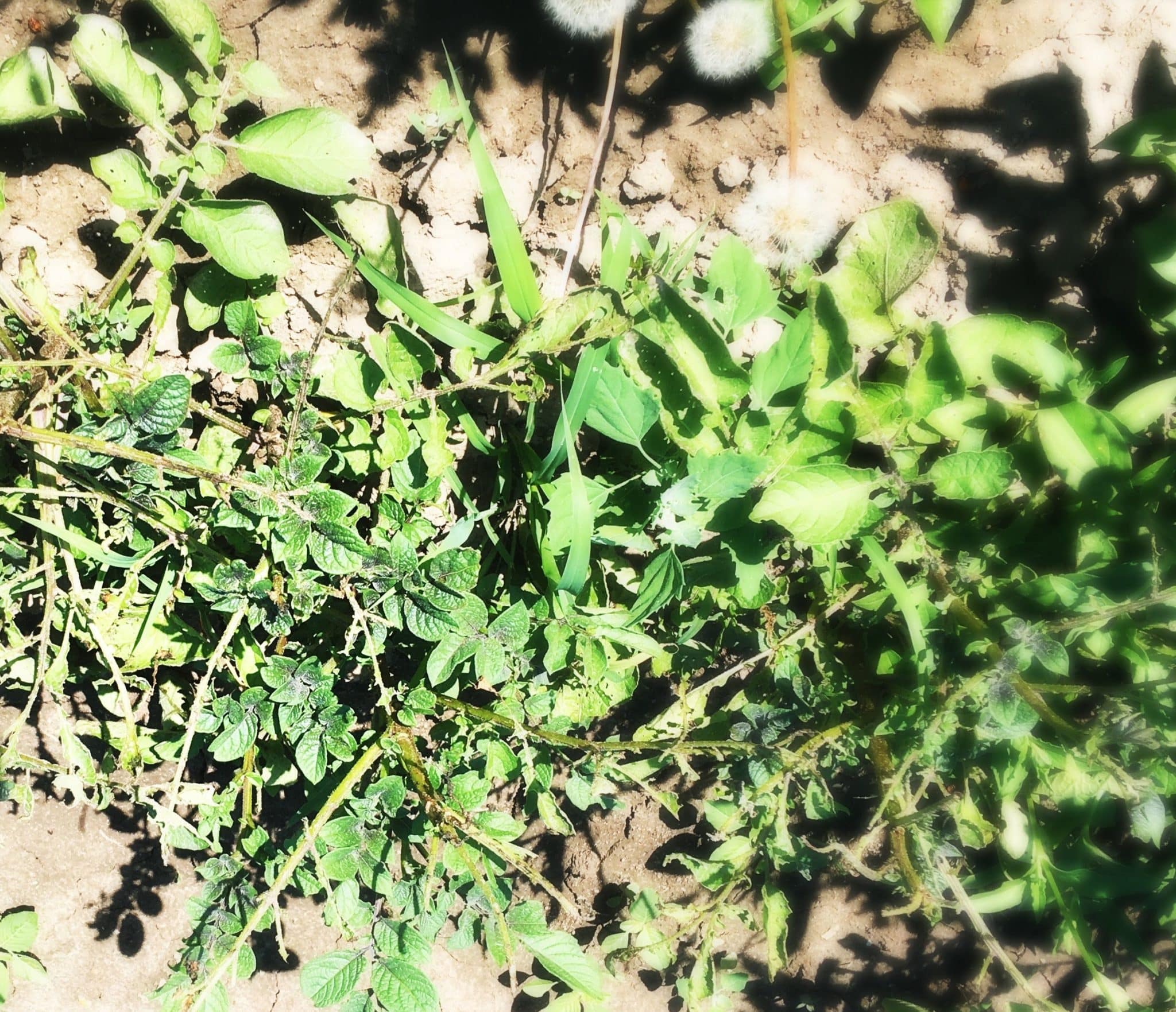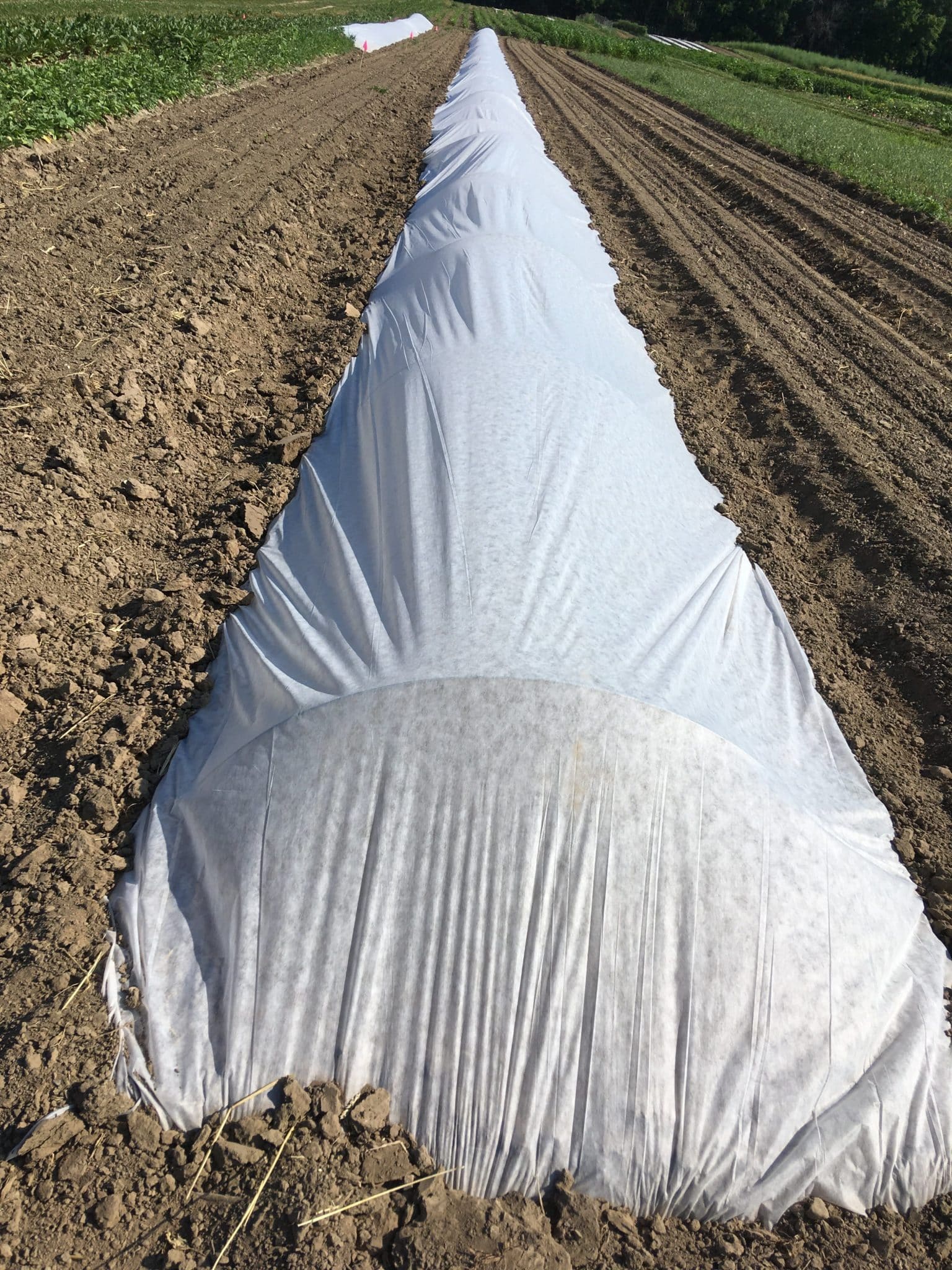
by Laurel Blomquist |
In my last journal entry, I explained how Gwenyn Hill Farm uses fertilizers. In this entry, I will explain how we control insect pests.
Integrated Pest Management
One of the challenges of organic farming is pest control. At Gwenyn Hill Farm, as with other organic farms, our primary approach is through Integrated Pest Management, a comprehensive system of lessening the harmful insect population on the farm. Years of research in the field of Entomology, the study of insects, has provided a body of knowledge regarding the habits, behaviors, and habitats of many varieties of insects, and has shown us many ways to manage their destructive behaviors.
For example, I grow 75 different crops, plus 30 different flowers. Ryan also plants a diversity of species in his pastures, row crops, and wildflower strips. The diversity means that our farm attracts not only harmful insects, but many beneficial species as well. We do not want to harm those beneficial species. Several of these, including ladybugs and predatory wasps, eat harmful insect species.
Healthy Soil = Healthy Plants
We grow healthy transplants, and encourage the health of the soil, which increases the health of our direct-seeded crops. Pests are less likely to attack healthy plants. Last year, our potato plants were not very healthy. We didn’t have very good equipment for hilling them, and they didn’t grow up strong. An infestation of Colorado potato beetles was able to strip the leaves, robbing the plants of the ability to produce food through photosynthesis, ultimately reducing the yield of the plants.

This year, the plants are super-healthy and ready to fend off the beetles. We scout for insects often, and try to eliminate them during their most vulnerable time, so they are less likely to reproduce a new generation. This year, we took pains to walk the field, turning over each leaf, and checking for beetle eggs. We destroyed the adults and as many eggs as we could find.
We also rotate the crops every year, disrupting the pest cycle for those insects that overwinter in the soil, ready to devour their host crop early in the spring.

Sometimes we use trap crops to lure insects to a type of plant that is less desired by humans. Last year, Japanese beetles seemed to really like the variety of baby eggplant that I planted. Rather than battling the beetles on this crop, I let them congregate there, leaving the rest of the eggplant alone. This year, I planted a row of Blue Hubbard squash at the edge of the winter squash field to trap squash beetles, expecting lower yields on that squash, but better yields in the rest of the field.
We can use physical barriers as well. We have an agricultural blanket that can be used to keep flea beetles off of small brassicas such as arugula, radishes, baby bok choy, and mustard greens. Last summer, we used this blanket to keep Japanese beetles off of basil.
Organic-Approved Pesticides
The cabbage moths are another story. There’s not much else we can do about them but spray. We use a product called Dipel, bacillus thuringiensis var. Kurstaki, BT for short. You can find out more about it here. Basically, it’s a soil microbe toxic to leaf- eating
caterpillars of lepidoptera moths, so it is not harmful to other insects on the farm. The moths lay eggs on plants in the broccoli family, hatching into larvae as green as the broccoli leaves. They are voracious, eating large holes in leaves and hiding in the broccoli heads. Holes and green worms make produce unsaleable.
We also had to spray our potato plants even after we physically eliminated the adults and eggs. A new generation of larvae emerged from the eggs we missed. We sprayed in the evening. The next morning, the larvae had disappeared. Hopefully, this careful timing means that we won’t have another generation appear this season. We use a product called Entrust, or Spinosad, which you can learn more about here. It is a fermentation of a naturally-occurring soil bacterium.
Safety First
Any time we spray, we follow the exact instructions on the safety sheet that comes with the product. We use masks, long sleeves and pants, and gloves to apply the product. We use a backpack sprayer, which means we walk up and down the specific row of plants that we are targeting and spray the plants directly. We do not spray overhead, with planes, sprinkler systems, or foggers. When we spray flowering crops we spray in the evening, so that beneficial insects such as honeybees aren’t affected during their active times.
Each of these pesticides are made from natural substances, not from harsh chemicals like the pesticides that are used in conventional agriculture. As much as possible, they are targeted to their specific pest, so that beneficial forms of life may live. Each product allowed in organic production must meet such standards as not being synthetic and not persisting in the environment. They break down into non-toxic compounds when exposed to sunlight, heat and moisture.
While some farmers do claim to be “no spray,” these are not farmers who sell the kind of blemish-free produce that customers demand.
Keeping ahead of our insects on Gwenyn Hill Farm requires a whole toolbox of creative approaches for managing pests and encouraging beneficial insects. We believe this approach yields some of the best vegetables you will find anywhere, while protecting our soil, water and neighborhoods from synthetic pesticide contamination. If you have any further questions, please feel free to ask by emailing: farmer@gwenynhill.com.
Laurel Blomquist has been picking up insects since she was two years old.
